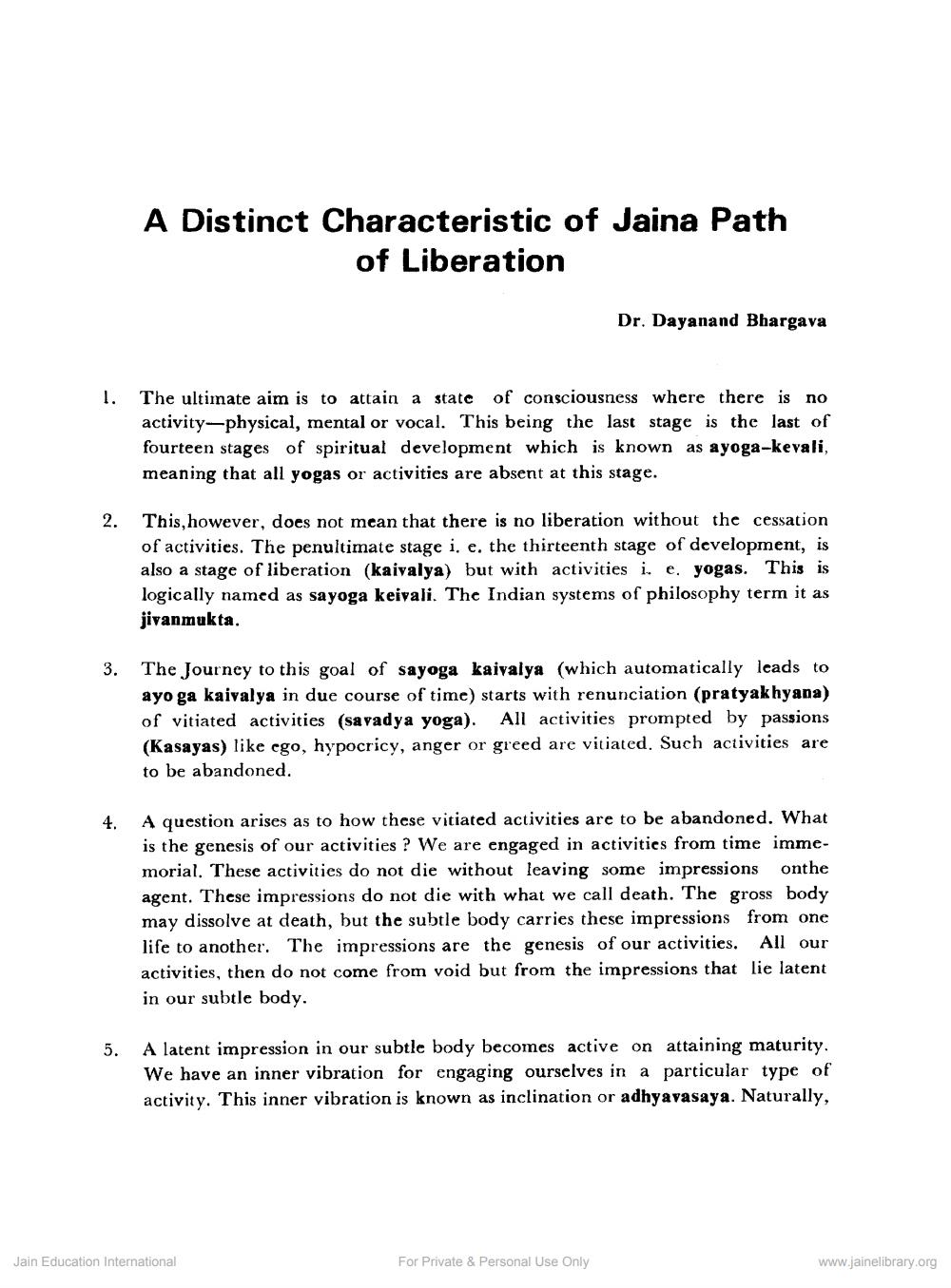________________
A Distinct Characteristic of Jaina Path of Liberation
1. The ultimate aim is to attain a state of consciousness where there is no activity-physical, mental or vocal. This being the last stage is the last of fourteen stages of spiritual development which is known as ayoga-kevali, meaning that all yogas or activities are absent at this stage.
2. This, however, does not mean that there is no liberation without the cessation of activities. The penultimate stage i, e. the thirteenth stage of development, is also a stage of liberation (kaivalya) but with activities i. e, yogas. This is logically named as sayoga keivali. The Indian systems of philosophy term it as jivanmukta.
5.
Dr. Dayanand Bhargava
The Journey to this goal of sayoga kaivalya (which automatically leads to ayo ga kaivalya in due course of time) starts with renunciation (pratyakhyana) of vitiated activities (savadya yoga). All activities prompted by passions (Kasayas) like ego, hypocricy, anger or greed are vitiated, Such activities are to be abandoned.
4.
A question arises as to how these vitiated activities are to be abandoned. What is the genesis of our activities? We are engaged in activities from time immemorial. These activities do not die without leaving some impressions onthe agent. These impressions do not die with what we call death. The gross body. may dissolve at death, but the subtle body carries these impressions from one life to another. The impressions are the genesis of our activities. All our activities, then do not come from void but from the impressions that lie latent in our subtle body.
A latent impression in our subtle body becomes active on attaining maturity. We have an inner vibration for engaging ourselves in a particular type of activity. This inner vibration is known as inclination or adhyavasaya. Naturally,
Jain Education International
For Private & Personal Use Only
www.jainelibrary.org




